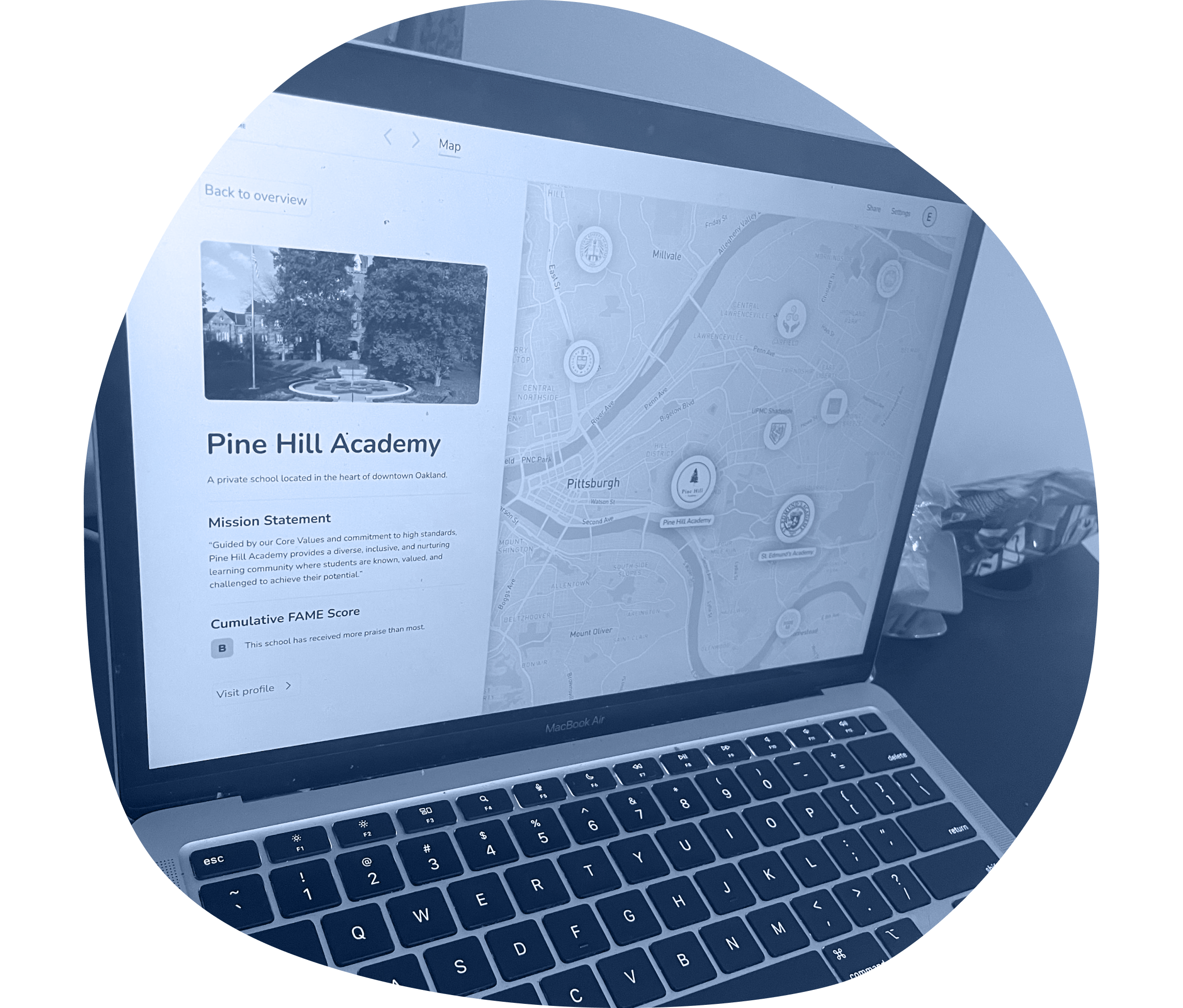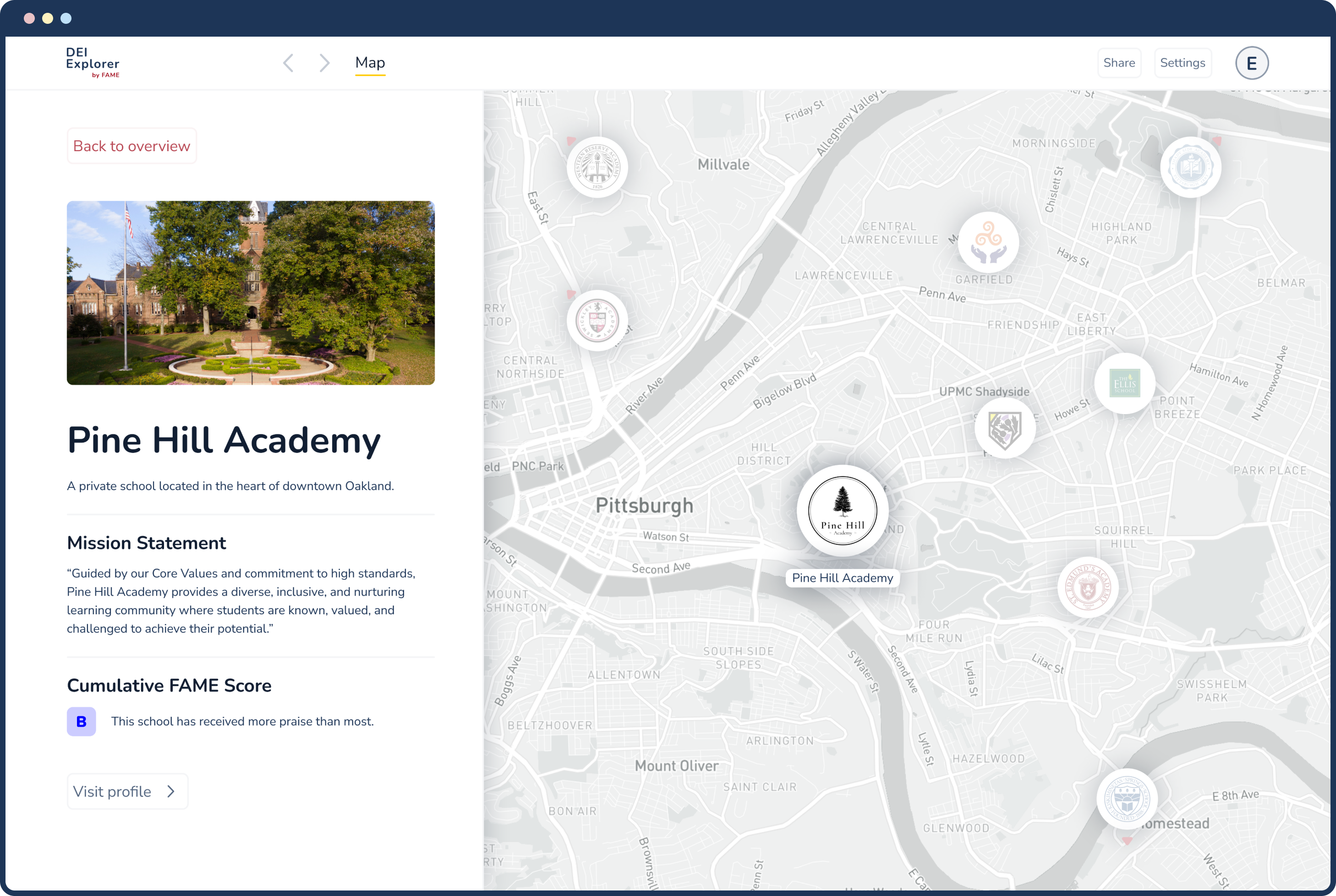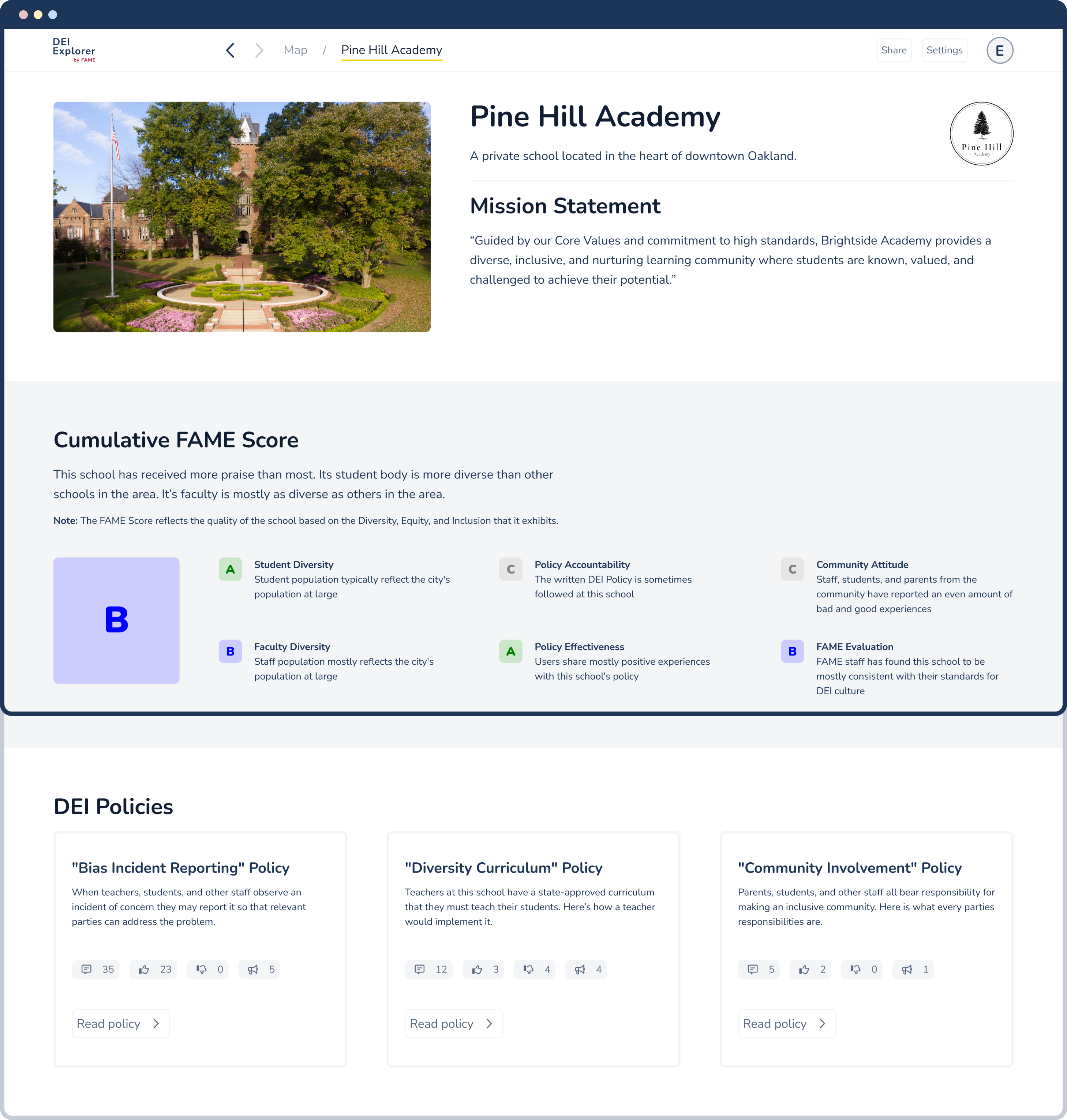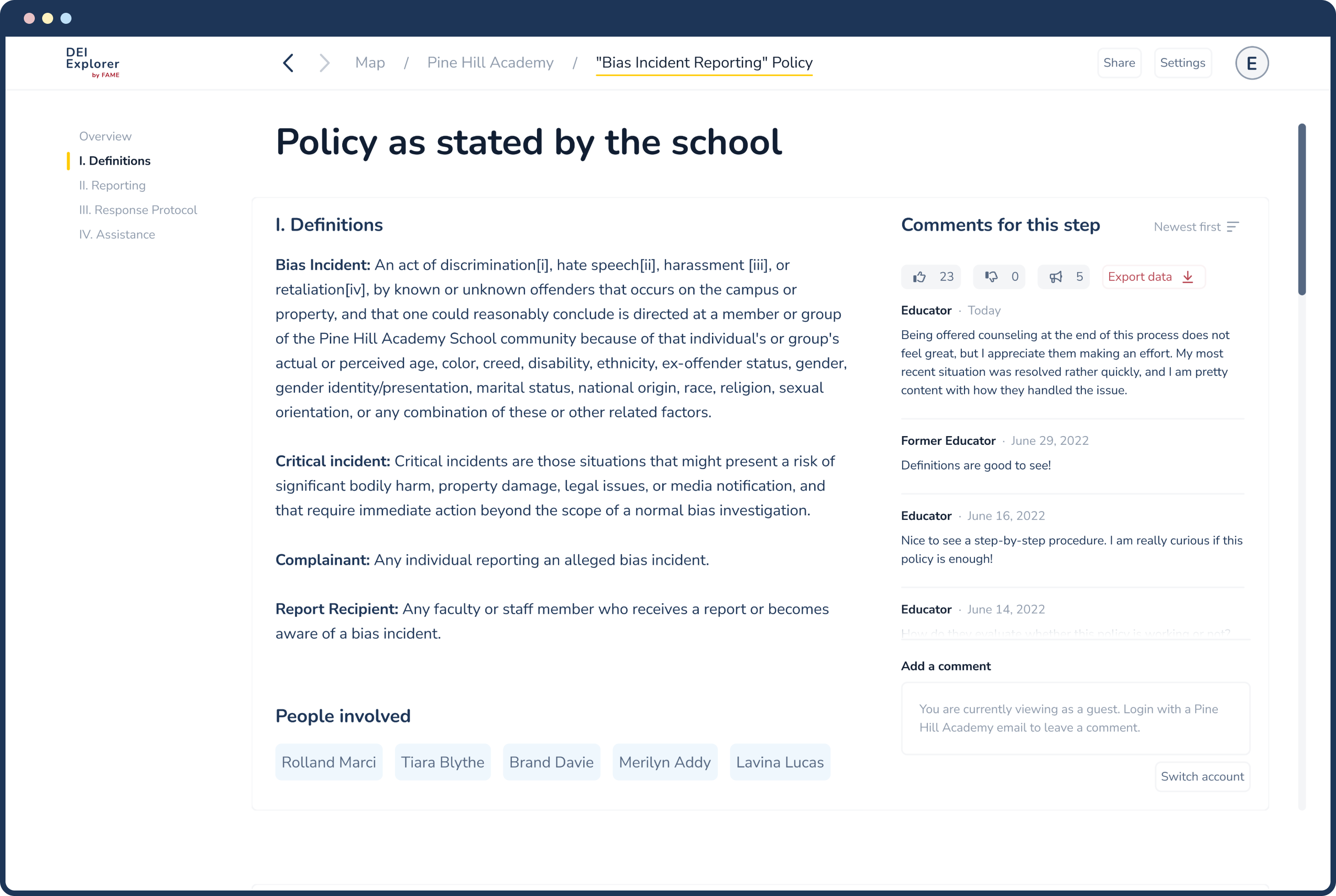As a culmination of our 8-month project, including a deep dive into the education space as well as a full iterative design process, our team is tackling the lack of transparency and communication amongst all parties at a school to support the retention of Black educators.

As we built up the idea of our service, our team worked up to a high-visual-fidelity prototype of the interface that we imagine being part of the overall service.
This interface, the DEI Explorer, consists of (1) a digital interface, through which three stakeholders can communicate with each other; (2) a FAME score, through which FAME can track and publicize how well schools are living up to their commitment to DEI; and (3) recommendations from FAME to administrators on how to raise their school’s FAME score.

When first entering the site, users have the ability to browse around a map to find a particular school to learn more about. They are able to see:
A map with all schools partnered and opted in to the DEI Explorer
A high-level introduction to the selected school
On this page, users receive an in-depth view of a school.
A breakdown of the school's FAME score and why the score is what it is.
A listing of the different aspects of the school’s DEI Policy, and an introduction to the various reactions and engagement that has taken place on each.


Once a policy is selected, users are able to review numerous aspects of what is listed.
The policy is written on the interface using the text that is stated in existing policy documentation from the school.
Experienced educators can leave comments while aspiring educators and DEI admin will learn about how well policies work in practice by reading them.
The export button is only viewable by DEI admin and FAME staff, allowing them to see all comments left on the policy.
While the original concept of our service was intended as an enhancement of the Teachers’ Academy and a form of professional development for aspiring Black educators, we quickly saw that we could reach far beyond this scope.
We considered the needs of three stakeholders who represent groups that have a lot to offer to each other. Our service aids these stakeholders in exchanging valuable assets with each other, with FAME as the facilitator.
Administrators, like Addy, use the DEI Explorer to display the various policies that are implemented at their school.
This is an opportunity for them to be transparent and open about how their school plans to deal with DEI related issues.
Experienced Educators, like Ed, are able to review the listed policies and leave feedback in the form of comments and reactions.
These educators are able to reference their own first-hand experience of how these policies are actually being implemented.
Aspiring Educators, like Ash, are able to browse around the DEI Explorer to find the best schools associated with FAME to teach at.
These users can read the displayed policies and the associated feedback to learn more about a school's DEI climate, aiding their decision on whether or not this school is the right fit for them.
While all of this is taking place, FAME is able to combine its years of knowledge with the data gathered from each policy to suggest changes to a school's policy.
By updating their school's policies with FAME's support, administrators would aid in the retention of experienced educators while also creating a more welcoming environment for aspiring educators.
Our team developed a three-stage plan, through which FAME can incrementally roll out these components to the public. Through implementing this plan, FAME will be able to leverage strong partnerships and begin building up data that will provide proof of concept to DEI Explorer.
Stage 1: Piloting with a single partner school
Stage 2: Involving all of FAME's partner schools
Stage 3: Offering the service to more schools and organizations